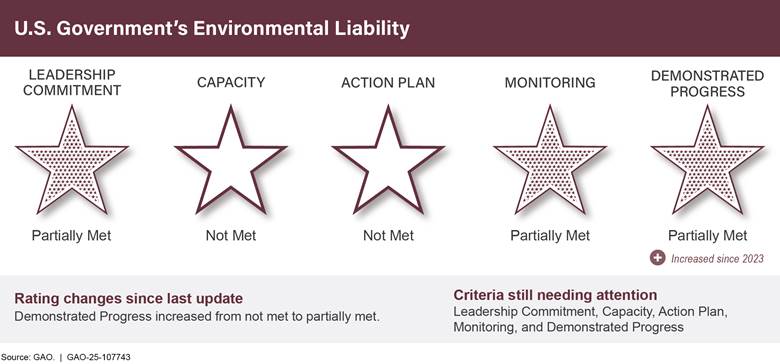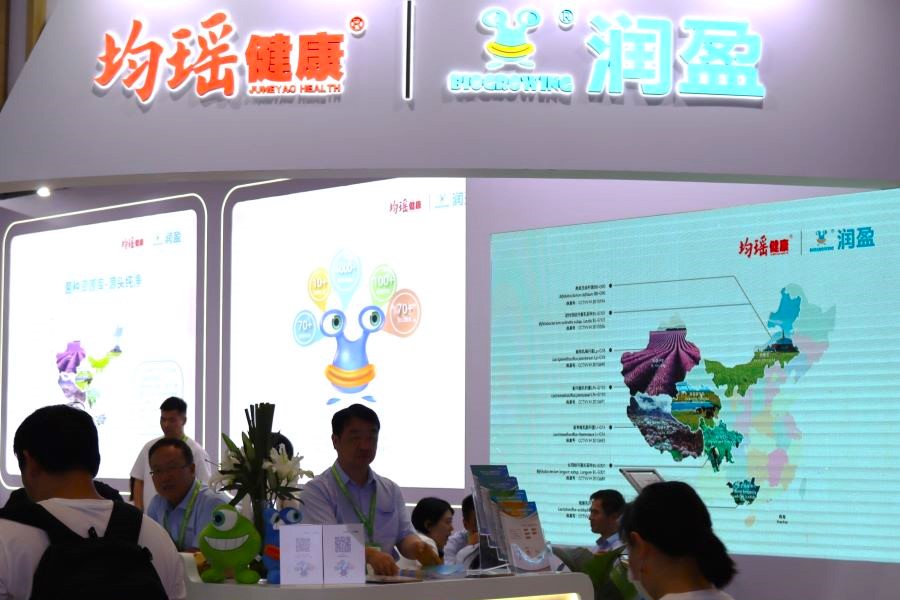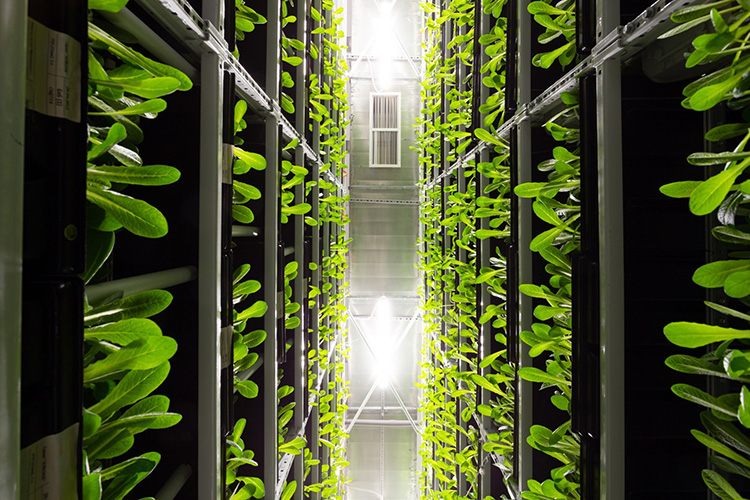Report on Proposed Changes to Genetic Modification Definitions and Implications for Sustainable Development Goals
1.0 Executive Summary
A proposal by Food Standards for Australia and New Zealand (FSANZ) to amend the definition of genetic modification (GM) in the Food Standards Code has generated significant debate. The proposed change would exempt certain gene-edited foods from GM labelling requirements, a move supported by food technology proponents for its potential to advance several Sustainable Development Goals (SDGs), particularly those related to innovation and food security. Conversely, organic industry representatives express concern that the change could undermine SDG 12 (Responsible Consumption and Production) by reducing consumer transparency and choice.
2.0 The Regulatory Proposal
FSANZ has put forward a proposal to modernize what it considers an “outdated” definition of genetic modification. The key change focuses on the application of new breeding techniques, such as gene editing.
- Current Regulation: Foods defined as genetically modified are subject to stringent regulations and mandatory labelling.
- Proposed Change: Foods produced using gene editing would not be classified or regulated as GM, provided no “novel DNA” (defined as DNA with an altered chemical sequence or structure) is introduced.
- Stated Rationale: To remove ambiguity, improve clarity for businesses and consumers, and better reflect modern scientific capabilities, thereby protecting public health while fostering innovation.
3.0 Alignment with Sustainable Development Goals: Innovation and Food Security
Proponents, including CropLife Australia, argue that the regulatory update is crucial for achieving key SDG targets by unlocking the potential of ag-biotechnology.
3.1 SDG 2: Zero Hunger & SDG 9: Industry, Innovation, and Infrastructure
The change is expected to enhance agricultural productivity and sustainability by facilitating the development of improved crops.
- Increased Productivity: Gene editing can replicate changes that occur naturally but in a more targeted and efficient manner, accelerating crop improvement. An example cited is editing a corn gene to alter its starch content.
- Fostering Innovation: By aligning Australia’s standards with global partners like the US and Canada, the change would lower barriers to market entry for new products, such as the non-browning Arctic apple, which helps reduce food waste.
- Economic Growth: Modernizing the regulatory framework is seen as essential for Australia to remain competitive in the global ag-biotechnology sector.
3.2 SDG 3: Good Health and Well-being
The new breeding techniques offer significant potential for public health benefits.
- The precision of gene editing could be used to address health issues, such as by developing crops with reduced allergens (e.g., gluten).
4.0 Counterarguments: Upholding SDG 12 (Responsible Consumption and Production)
The organic industry, represented by Australian Organic Limited, has raised concerns that the proposal could compromise principles of responsible consumption by diminishing consumer transparency.
4.1 Concerns Regarding Consumer Choice and Transparency
The primary objection is that the change may mislead the public and erode their right to make informed choices.
- Lack of Labelling: Products created with gene editing, such as the proposed purple tomato, could enter the market without any specific labelling, traceability, or pre-market assessment under the GM framework.
- Erosion of Clarity: It is argued that consumers will lose the ability to identify whether a product has been gene-edited.
- Disclosure Mandates: Concerns were raised that mandatory disclosure of GM ingredients could be weakened, although proponents maintain that all foods legally defined as GM will continue to require mandatory labelling.
5.0 Conclusion and Regulatory Decision
Food ministers from Australia and New Zealand have agreed not to request a review of the proposal. FSANZ asserts that the new definitions will not alter the fundamental regulatory approach to GM food or its labelling, and that consumers will continue to have the information needed for informed choice. Proponents frame the outcome as a necessary clarification, ensuring that only foods containing foreign genes are labelled as GM, thereby supporting both innovation and consumer clarity in line with global standards.
1. Which SDGs are addressed or connected to the issues highlighted in the article?
SDG 2: Zero Hunger
- The article discusses advancements in food production through gene editing, which aims to increase agricultural productivity and create more resilient or beneficial crops. This connects to ending hunger, achieving food security, and promoting sustainable agriculture.
SDG 3: Good Health and Well-being
- The potential for gene editing to address health issues, such as creating foods that mitigate allergies like gluten intolerance, is mentioned. The debate also touches on public health and safety, with the regulator’s role being to protect consumers.
SDG 9: Industry, Innovation, and Infrastructure
- The core of the article is about updating regulatory frameworks (“outdated” definitions) to foster innovation in the food technology sector. It highlights the need for modern regulations to support new technologies and increase industrial competitiveness.
SDG 12: Responsible Consumption and Production
- A significant part of the article focuses on consumer rights, information, and labeling. The concern that changing the definition of GM could “mislead” consumers and deny them the ability to make informed choices directly relates to sustainable consumption patterns.
SDG 17: Partnerships for the Goals
- The article mentions the goal of aligning Australian food standards with those of global trading partners like the US and Canada. This points to the importance of international cooperation and policy coherence to facilitate trade and technology transfer.
2. What specific targets under those SDGs can be identified based on the article’s content?
SDG 2: Zero Hunger
- Target 2.4: By 2030, ensure sustainable food production systems and implement resilient agricultural practices that increase productivity and production.
- The article supports this target by discussing how gene editing can improve productivity. Matthew Cossey of CropLife Australia is quoted saying the change will “improve productivity in agriculture.” The example of creating corn with different starch content is described as a “more targeted and efficient way” to achieve changes.
- Target 2.a: Increase investment, including through enhanced international cooperation, in rural infrastructure, agricultural research and extension services, technology development and plant and livestock gene banks in order to enhance agricultural productive capacity.
- The article focuses on enabling “new technology” and “new breeding techniques” like gene editing. The push to change the regulations is driven by a desire to make it easier for “food tech companies to get new products to market,” which directly relates to enhancing agricultural productive capacity through technology development.
SDG 3: Good Health and Well-being
- Target 3.9: By 2030, substantially reduce the number of deaths and illnesses from hazardous chemicals and air, water and soil pollution and contamination.
- This target is relevant through the lens of food safety. FSANZ’s role is to “protect public health and safety.” The concern from organic producers that some gene-edited products might enter the market without “testing prior to entering the consumer food market” reflects the need to ensure new food technologies do not pose a health risk. The article also mentions that gene editing could address health issues like “gluten allergy,” contributing to well-being.
SDG 9: Industry, Innovation, and Infrastructure
- Target 9.5: Enhance scientific research, upgrade the technological capabilities of industrial sectors in all countries, in particular developing countries, including, by 2030, encouraging innovation and substantially increasing the number of research and development workers per 1 million people and public and private research and development spending.
- The article is centered on encouraging innovation. Proponents of the change argue that the current definition is “outdated” and makes it “too difficult to bring new products to market,” thus stifling innovation. The change is intended to “open the doors for new technology” and support “innovators, developers, manufacturers, formulators and registrants of crop protection and ag-biotechnology products.”
SDG 12: Responsible Consumption and Production
- Target 12.8: By 2030, ensure that people everywhere have the relevant information and awareness for sustainable development and lifestyles in harmony with nature.
- This target is central to the opposition’s argument. Australian Organic Limited states the change would be “misleading” and that “Consumers will not have any clarity or choice if the products that they buy in the supermarket are gene-edited or not.” The debate over whether to label these foods as GM is a debate about providing consumers with information to make informed choices.
SDG 17: Partnerships for the Goals
- Target 17.6: Enhance North-South, South-South and triangular regional and international cooperation on and access to science, technology and innovation.
- The article explicitly mentions that the proposed change would “bring Australian standards in line with those of global trading partners, such as the US and Canada.” This highlights the effort to harmonize regulations to facilitate international trade and cooperation in technology.
3. Are there any indicators mentioned or implied in the article that can be used to measure progress towards the identified targets?
SDG 2: Zero Hunger
- Agricultural productivity: The article directly mentions the goal to “improve productivity in agriculture.” Progress could be measured by tracking yield improvements in crops developed through gene editing.
- Development of new crop varieties: The article gives examples like corn with changed starch content, non-browning apples, and seedless fruit. The number and adoption rate of such new varieties would be a clear indicator.
SDG 3: Good Health and Well-being
- Availability of foods with enhanced health benefits: The potential to address “gluten allergy” is mentioned. An indicator would be the number of new food products developed and marketed to address specific health conditions or allergies.
- Regulatory safety assessments: The debate over whether gene-edited foods require pre-market approval implies that the number of safety assessments conducted by regulators like FSANZ is a key indicator of public health protection.
SDG 9: Industry, Innovation, and Infrastructure
- Adoption of new technologies: The core issue is the adoption of gene editing. An indicator would be the number of companies and products utilizing this technology in the Australian market.
- Alignment of national standards with international norms: The article states a goal to align with the US and Canada. Progress can be measured by the degree of harmonization of the Food Standards Code with international counterparts.
SDG 12: Responsible Consumption and Production
- Clarity and scope of food labeling regulations: The entire debate is about labeling. An indicator is the legal definition of “genetically modified” and the number of products that are exempt from GM labeling under the new rules. The article notes that under the change, some products “would not require any labelling.”
- Consumer access to information: The concern about consumers not having “clarity or choice” implies that consumer awareness and access to information about production methods (e.g., through QR codes, websites, or labels) is a measurable indicator.
SDG 17: Partnerships for the Goals
- Harmonization of trade and technology policies: The explicit mention of bringing standards “in line with those of global trading partners” makes policy harmonization a direct indicator of progress towards this target.
4. Create a table with three columns titled ‘SDGs, Targets and Indicators” to present the findings from analyzing the article.
| SDGs | Targets | Indicators |
|---|---|---|
| SDG 2: Zero Hunger | 2.4: Ensure sustainable food production systems and increase agricultural productivity.
2.a: Increase investment in technology development to enhance agricultural productive capacity. |
|
| SDG 3: Good Health and Well-being | 3.9: Substantially reduce illnesses from contamination by ensuring food safety. |
|
| SDG 9: Industry, Innovation, and Infrastructure | 9.5: Enhance scientific research and upgrade technological capabilities to encourage innovation. |
|
| SDG 12: Responsible Consumption and Production | 12.8: Ensure people have relevant information and awareness for sustainable development. |
|
| SDG 17: Partnerships for the Goals | 17.6: Enhance international cooperation on and access to science, technology and innovation. |
|
Source: abc.net.au







